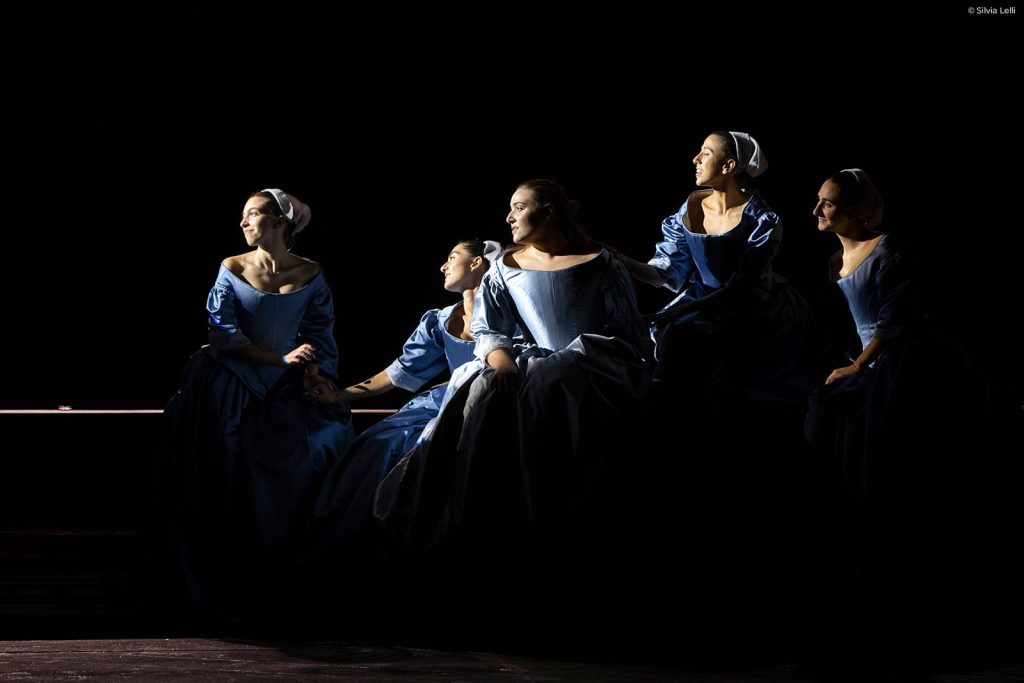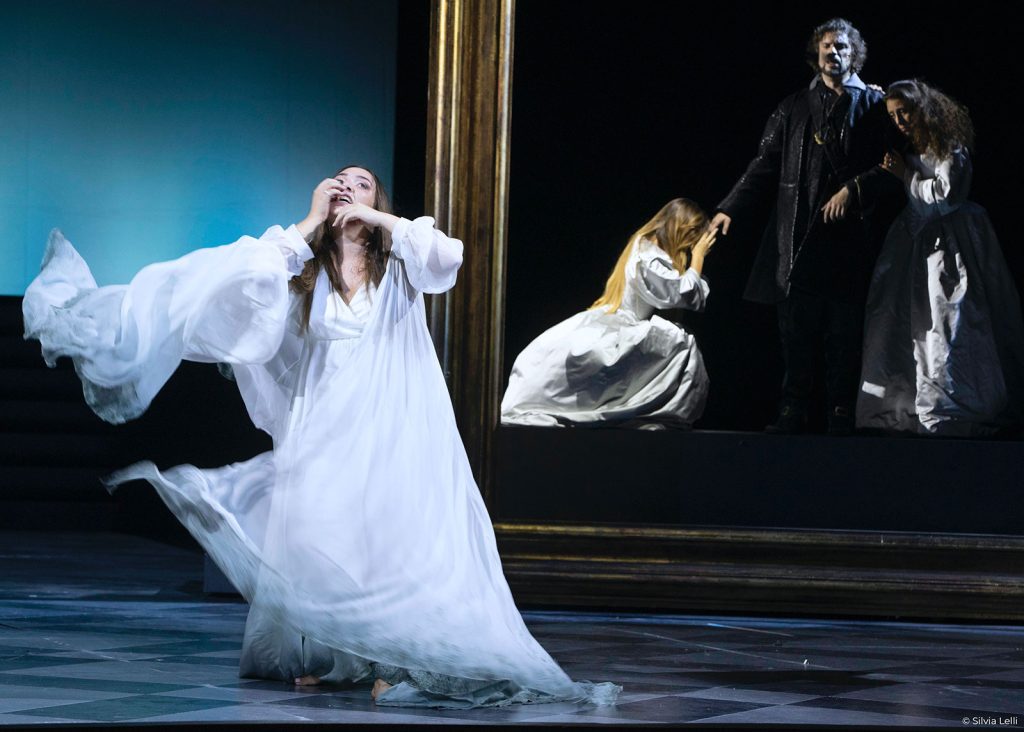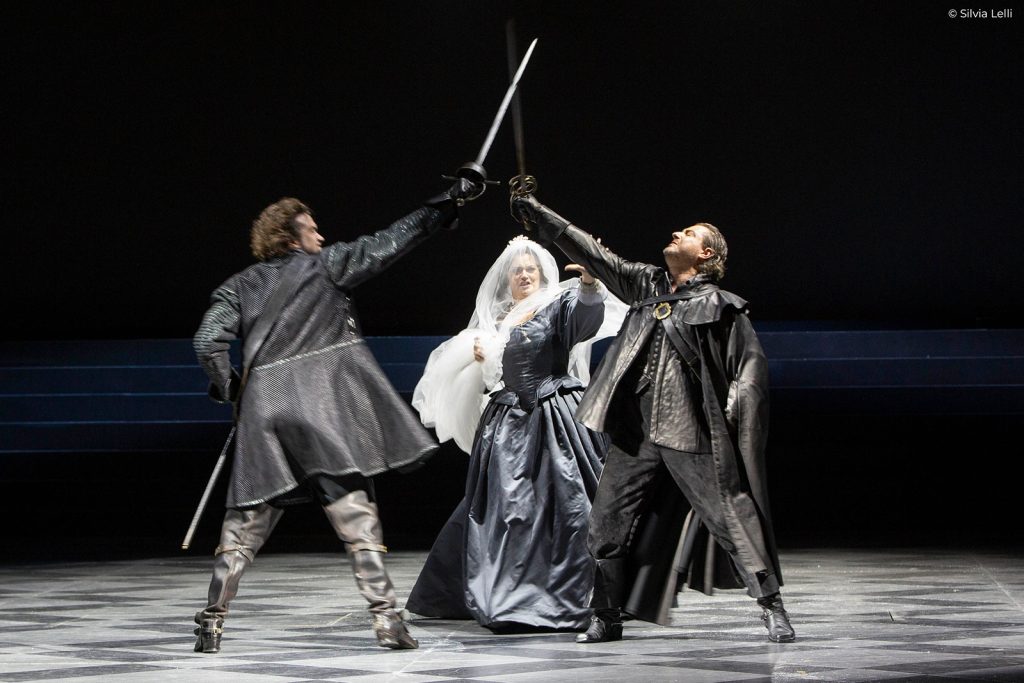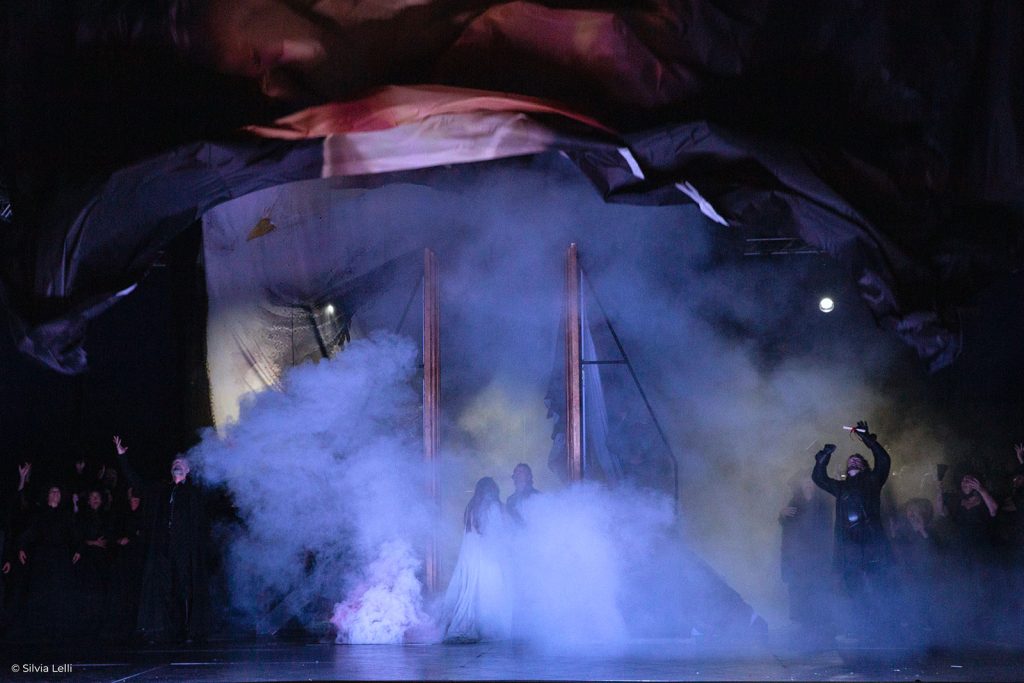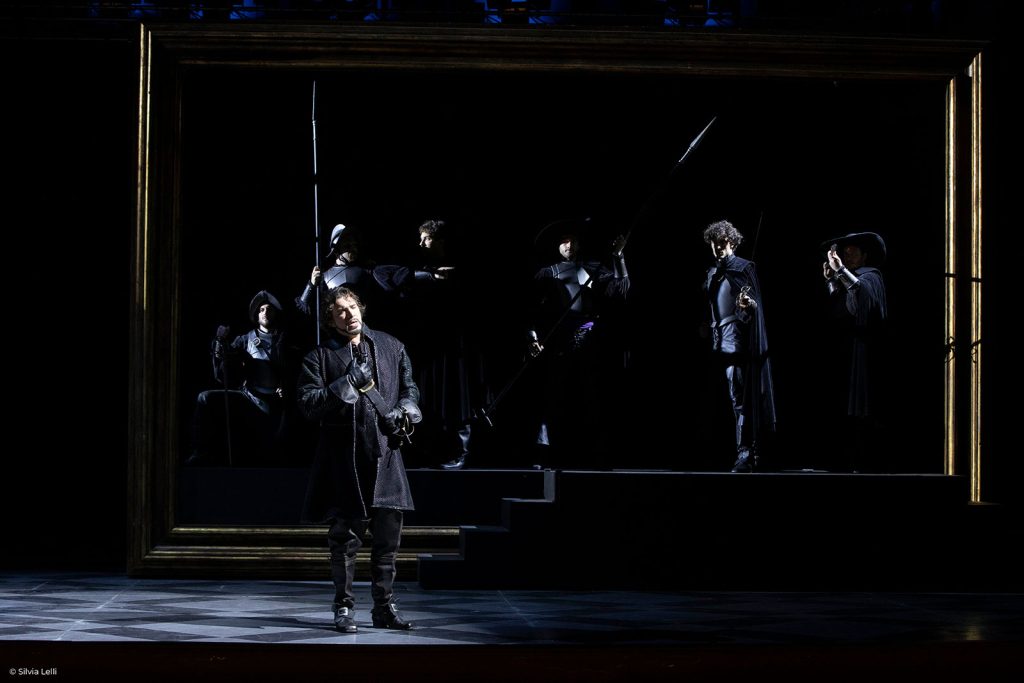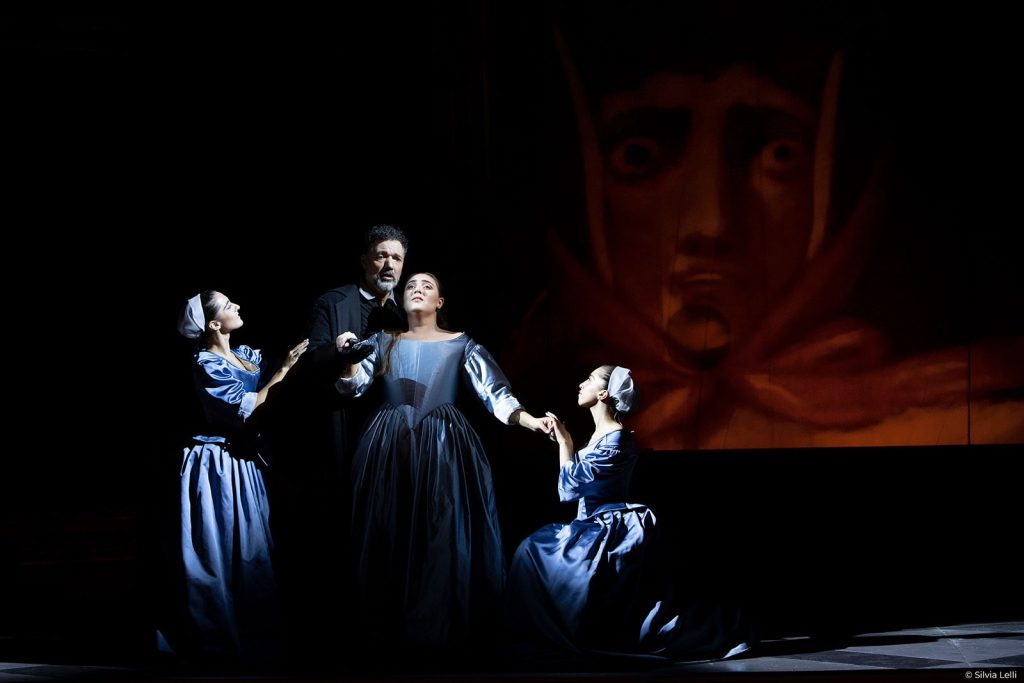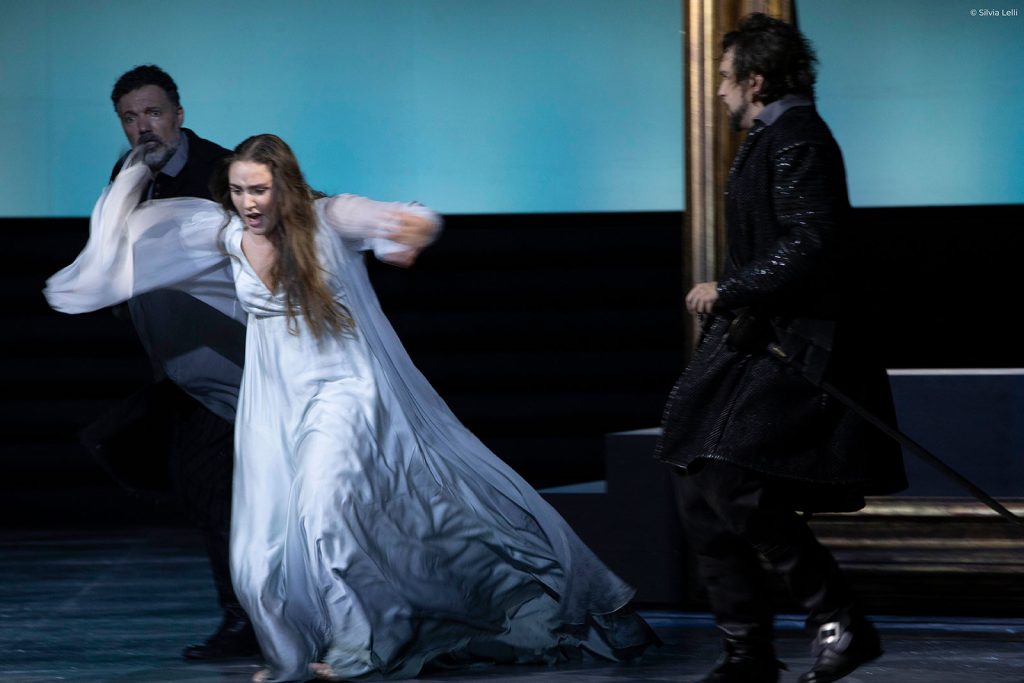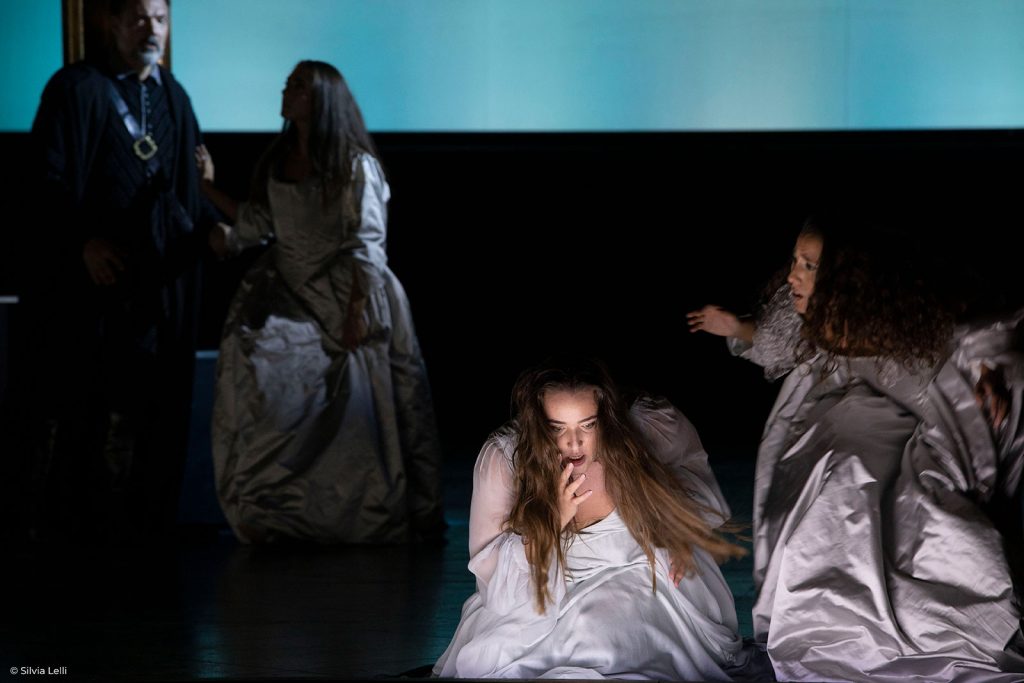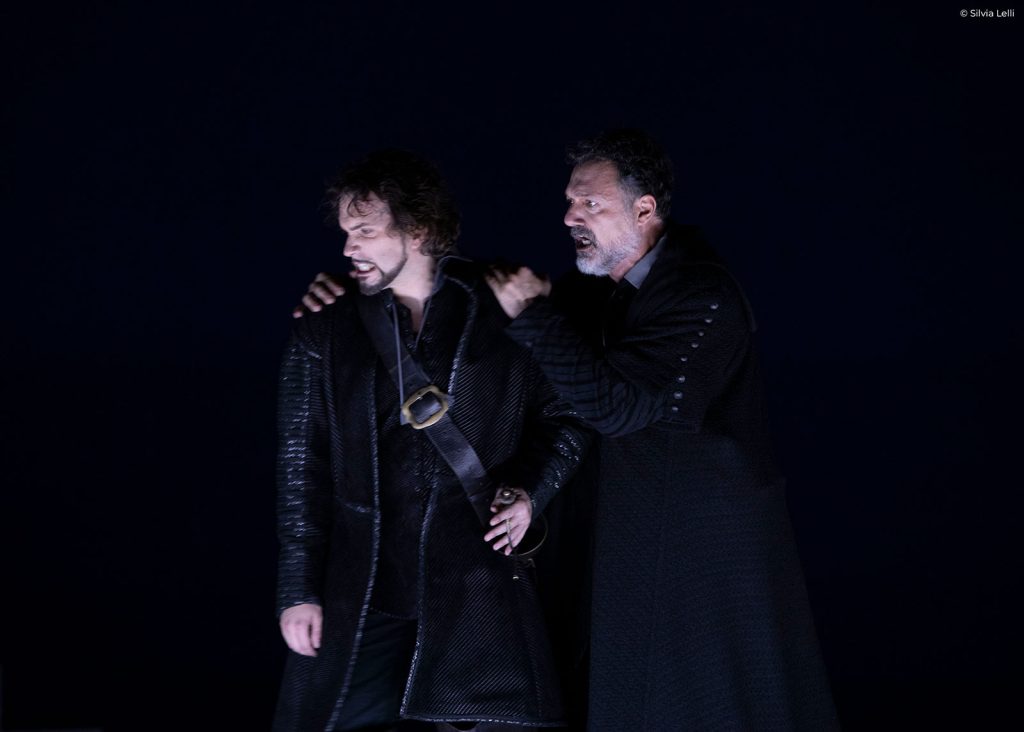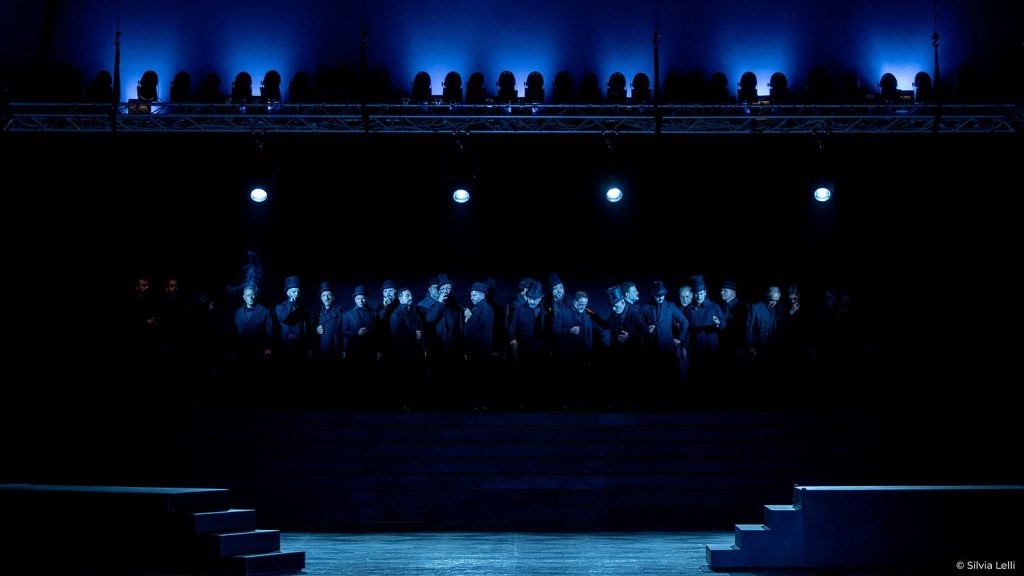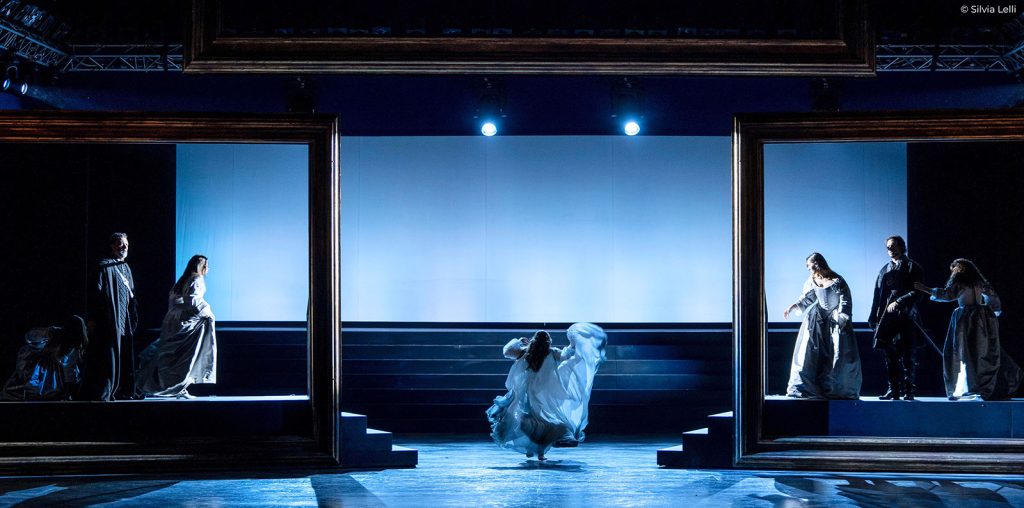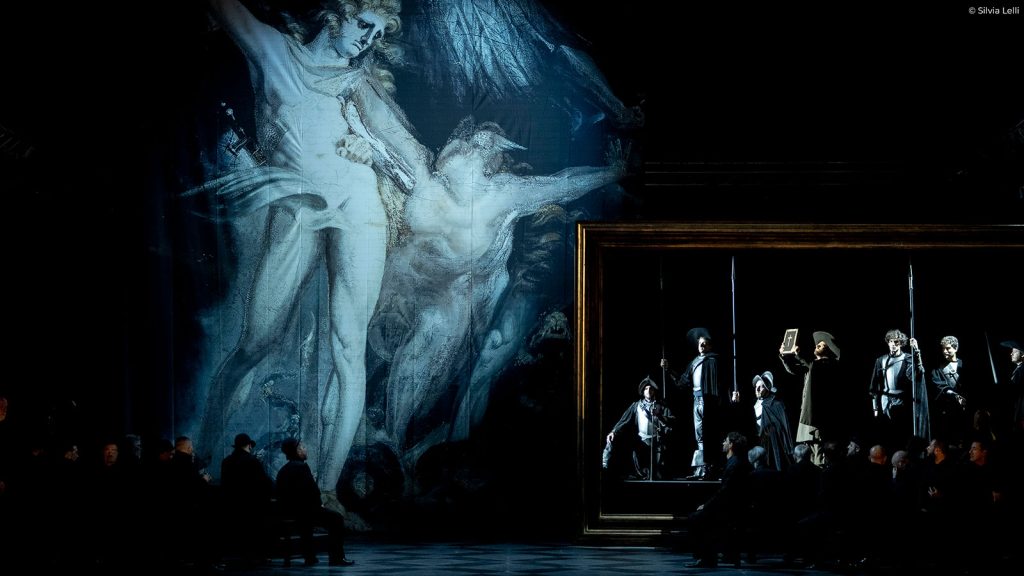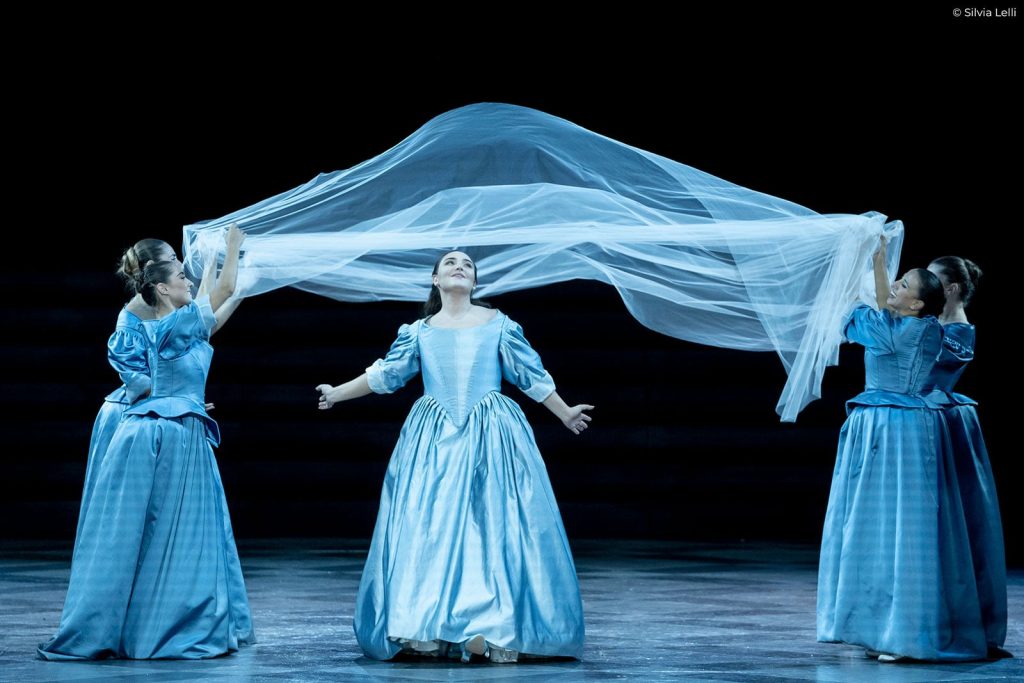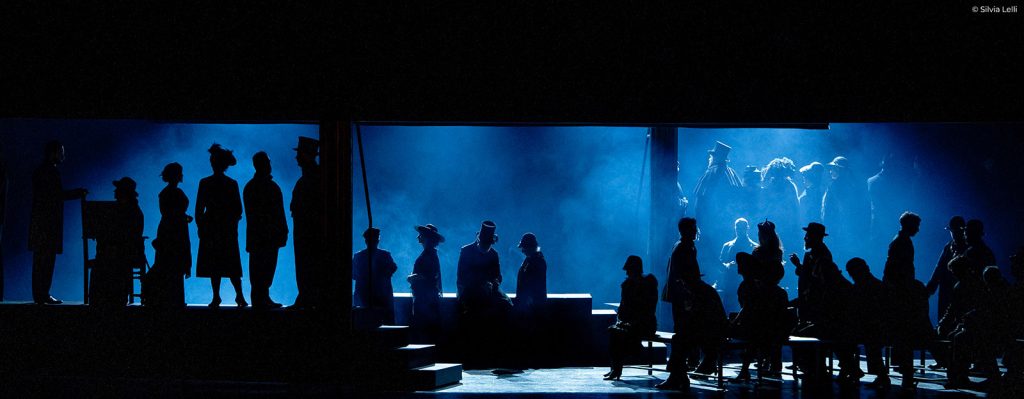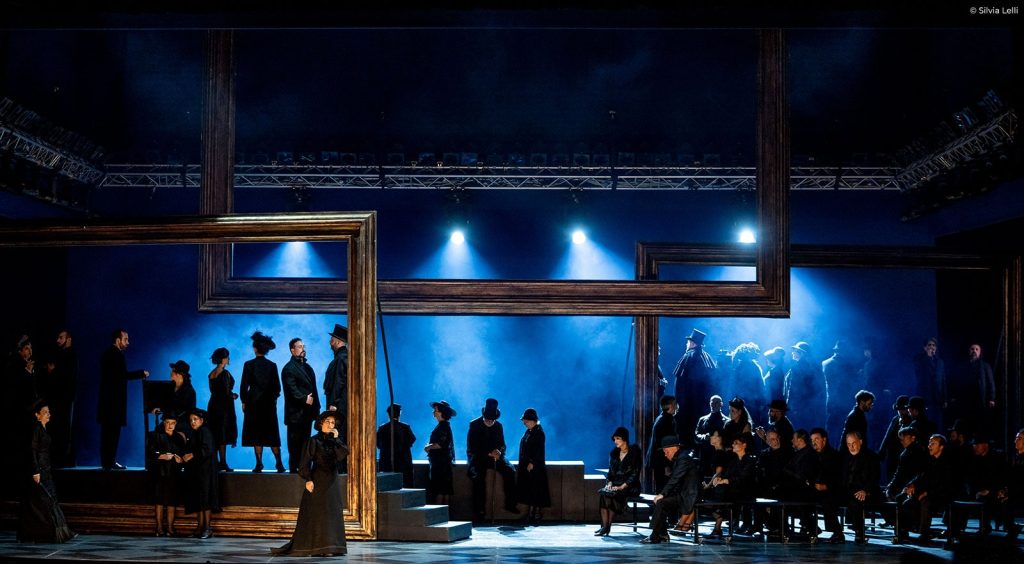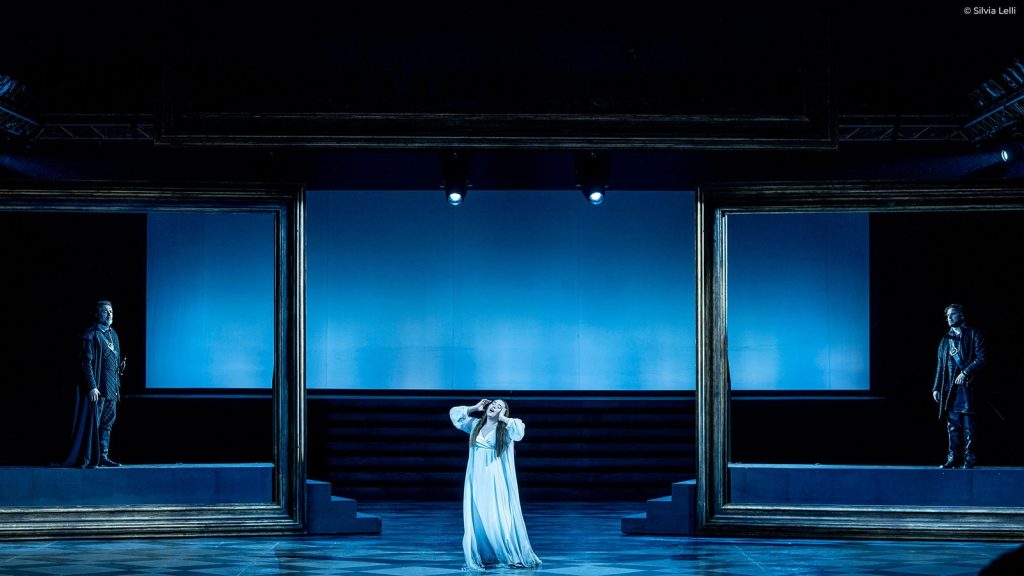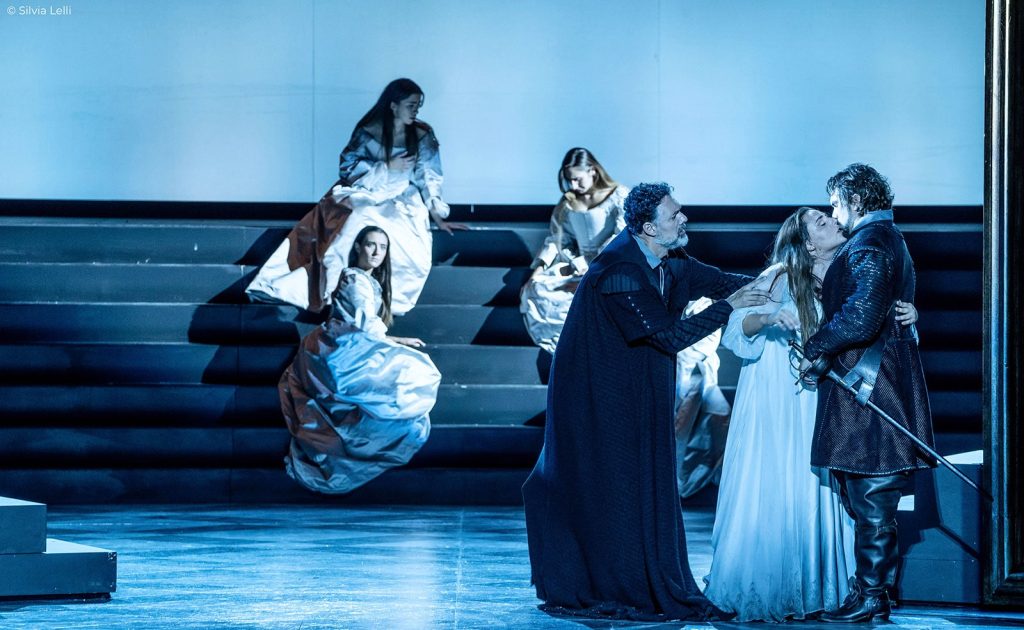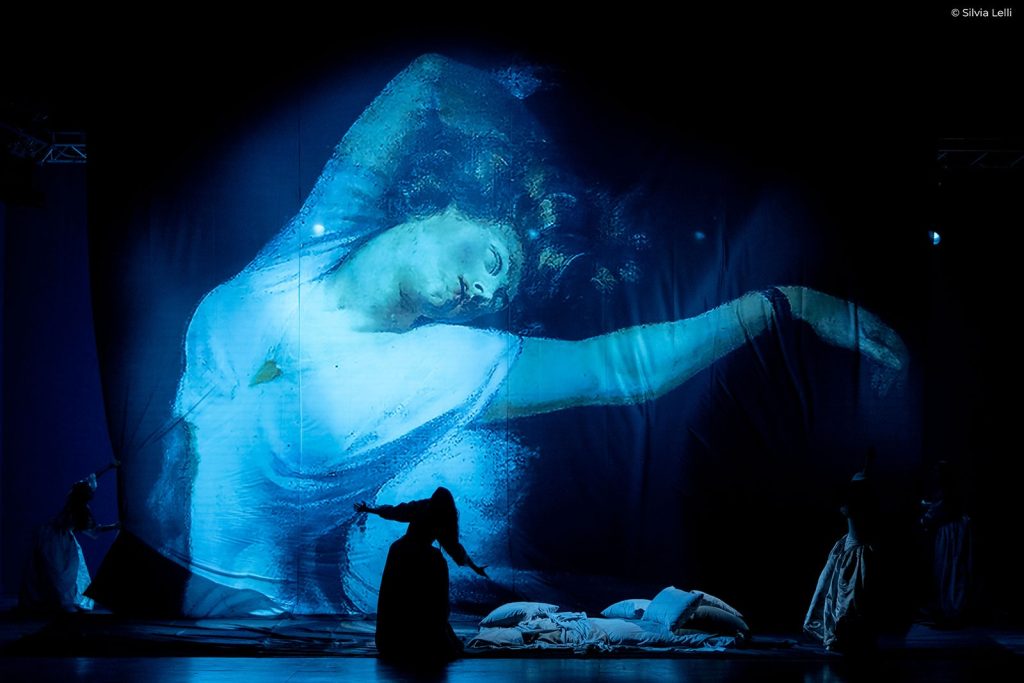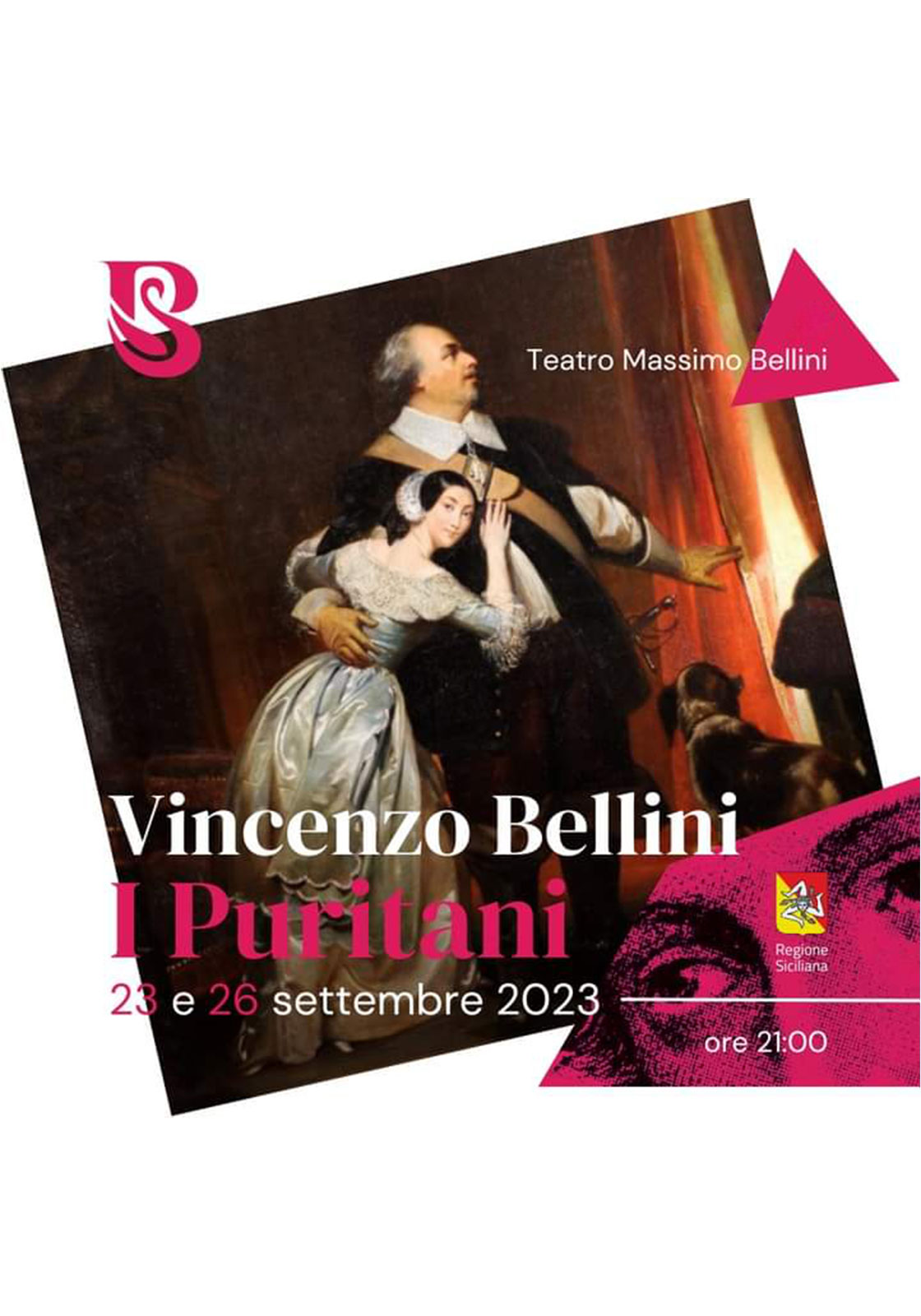
01 Jul I puritani
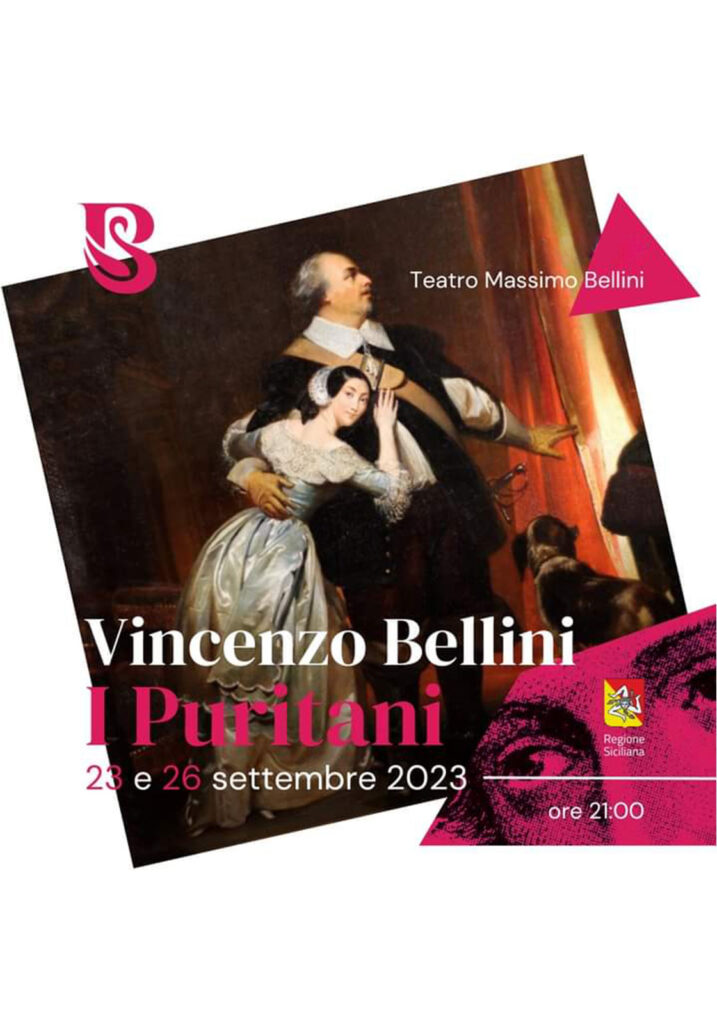
Credits
Opera seria in three acts
Libretto by Carlo Pepoli
Music by Vincenzo Bellini
(Ricordi critical edition edited by Fabrizio Della Seta)
Characters and performers
Elvira Valton Caterina Sala
Lord Arturo Talbo Dmitry Korchak
Sir Riccardo Forth Christian Federici
Sir Giorgio Valton Dario Russo
Lord Gualtiero Valton Andrea Tabili
Sir Bruno Robertson Marco Puggioni
Enrichetta di Francia Laura Verrecchia
conductor Fabrizio Maria Carminati
conductor Chiara Muti
Choirmaster Luigi Petrozziello
Sets Alessandro Camera
Costumes Tommaso Lagattolla
Light designer Vincent Longuemare
Stage director Arcangelo Mazza
Assistant stage manager Michela Mantegazza
Assistant director Paolo Vettori
Costumes assistant Donato Di Donna
Orchestra, Chorus and Technicians of the Teatro Massimo Bellini
New production of the Teatro Massimo Bellini
Directorial notes
Listening to the notes of Il Cigno’s music, one is enveloped by a sense of classical sweetness and a celestial, nineteenth-century melancholy. Bellini takes us by the hand and leads us into sensual, dreamlike, and moonlit atmospheres: an aura of magic permeates us. The crystalline beauty of his melodies echoes the myths of Magna Graecia and the love laments of nymphs, whispering to us of who we once were, offering a sense of belonging that consoles and fulfills us.
There is little trace here of English mists, stiff collars, or seventeenth-century Puritan intransigence in these harmonies so blissfully Italian. What have Cromwell and his cohorts—the censors of pleasure, the proponents of Presbyterianism, Baptism, and Congregationalism—to do with our Bellini, so sensual and proud, tender and impassioned? I Puritanipremiered on January 24, 1835, at the Théâtre de la Comédie- Italienne in Paris. It was an immense success! And certainly not for the libretto by Carlo Pepoli, inspired by the historical drama Têtes Rondes et Cavaliers by Ancelot and Boniface. No! Bellini was not interested in telling us a story of history, nor of the English Revolution and the fall of Charles I Stuart.
For the Catanese composer, the heart of the drama is the aching, vibrant, lacerating force of love—and it is always his women who tell us this story: Bianca, Imogene, Alaide, Zaira, Giulietta, Norma, Amina, Beatrice, and lastly Elvira—like them, expressive, emotional, tormented, and eternally alive for love, which remains the true starting point.
How to reconcile Puritanism and Romanticism? I imagined, then, a dreamlike space, suspended in time—perhaps the remnants of a museum awaiting a story to be told. As risorgimento notes begin to resound, nineteenth- and twentieth-century figures dressed in black—perhaps in mourning?—advance onto the scene. They appear in succession, gazing toward the horizon in search of distant memories. They glimpse the ghosts of the age of Charles I and Henrietta of France; their silhouettes, like van Dyck paintings in empty frames, animate in tableaux of prayers, battles, and love affairs.
The narrative thread of a seventeenth-century tale encounters the gaze of the nineteenth century, cloaked in its music—or, perhaps, the nineteenth and twentieth centuries framed together, scrutinizing us as we observe them, in a perpetual game of shifting perspectives. The subject becomes the object and vice versa, a metaphor for a material that only art can render immune to time.
Bellini’s music lives! It speaks to us today as it did then—and from then reassures us.
But there is nothing reassuring in the nocturnal landscapes of Cromwell’s Puritan England. Thus, as the sole allusion to the smoky, sarcastic world of Shakespeare, appear on stage, amid seventeenth-century characters, the canvases of Füssli—the quintessential painter of English theatre, a visionary and explorer of the human soul.
Anticipating the aesthetic ideals of Romanticism, though within a Neoclassical age, he depicted anxieties and deliria, sinister visions and anguished fantasies. His paintings exude phobias: Sin Interceding Between Satan and Death, Crazy Kate—madness for love—and The Shepherd’s Dream, inspired by the seventeenth-century literary masterpiece Paradise Lost by John Milton, who worked under the Protestant regime.
Finally, The Nightmare, a work of which Freud himself owned a copy, emblem of the feminine unconscious, of repressed desire, of lost innocence.
The storm at the beginning of Act III is, to me, a delirium of the soul. The image of a woman abandoned to herself, at the mercy of the winds, looms like a fevered hallucination of reason, tangled and impossible to unravel. In the final scene, the Puritans—persecutors of every form of representation—burn the canvases of the story. Through fire, they seek to disperse the memory of a past deemed inconvenient. The peace regained is thus the advent of a single, dominant way of thinking. The purifying flames deny any possible confrontation: a metaphor for the tyranny of censorship! Everything passes—eras, interpretations, fashions, and systems of judgment—but genius endures, an eternal source from which to draw. From above, like a Deus ex machina, the divine Bellini descends, a giant, to extinguish the flames. Art must not be touched! It stands as an immutable witness and rises, immense, against every form of obscurantism.



